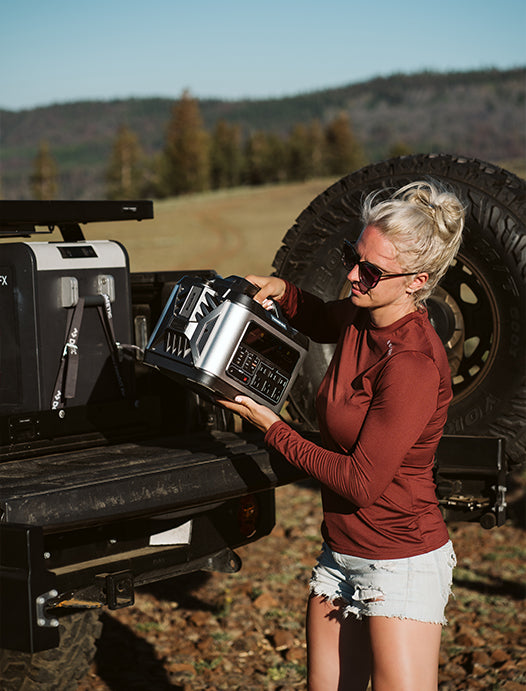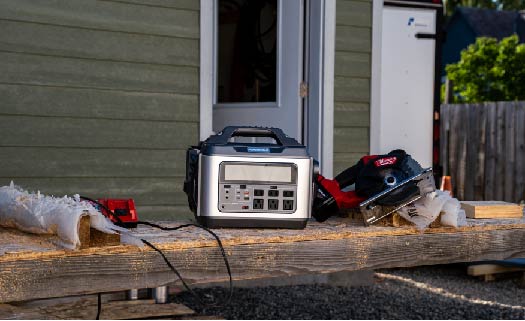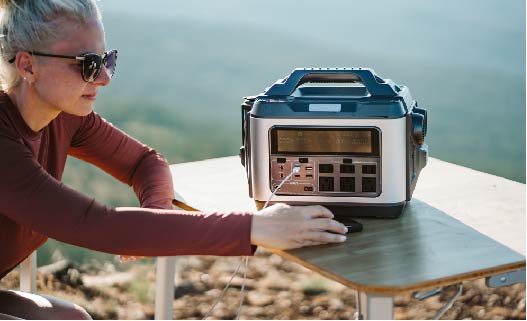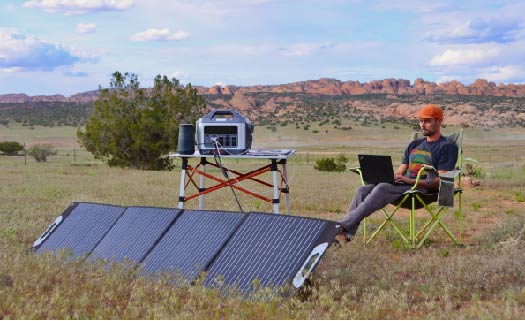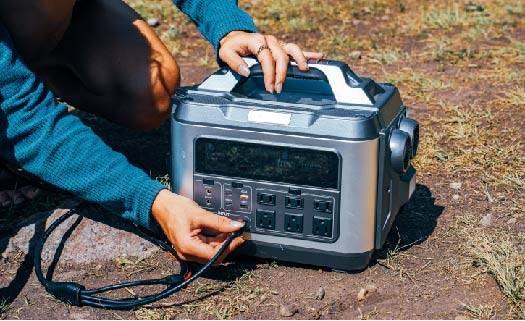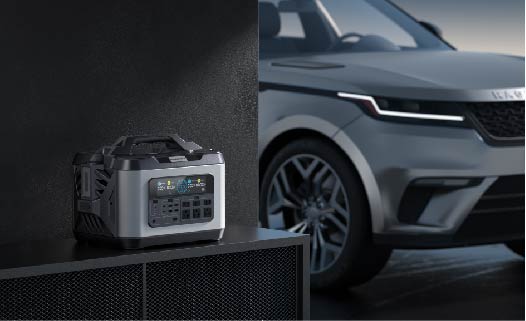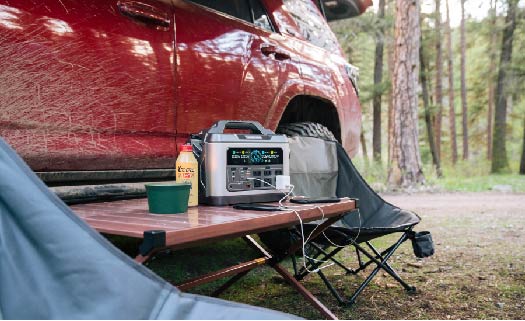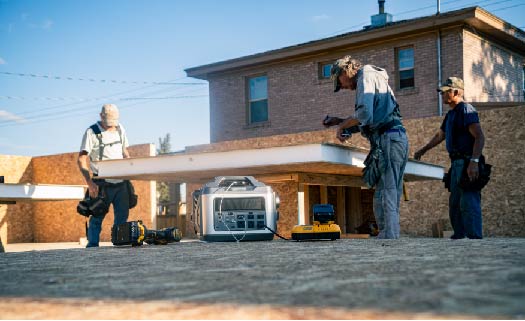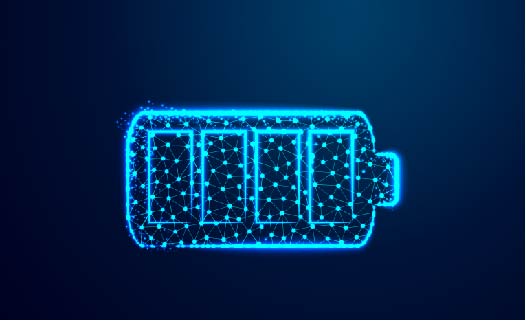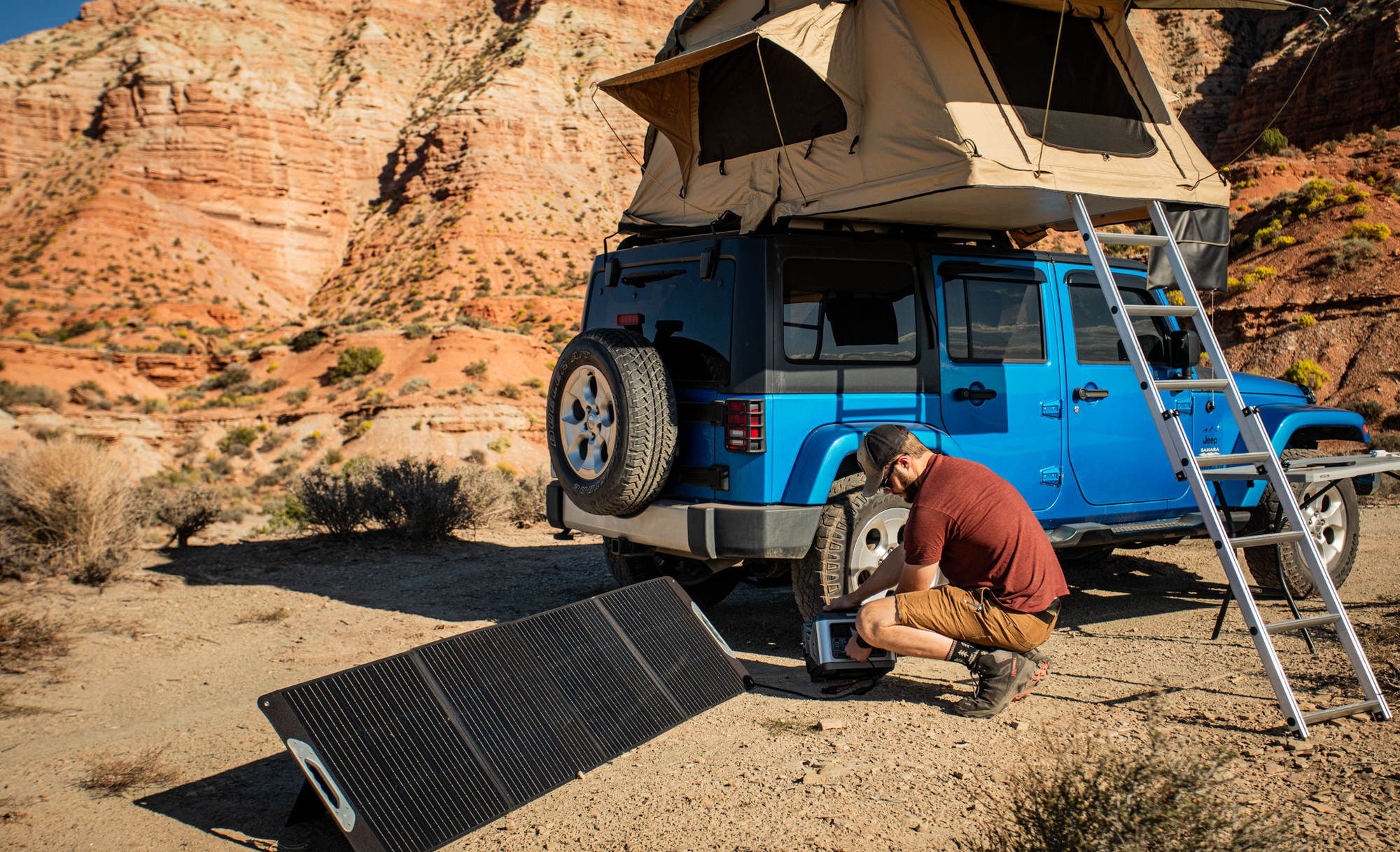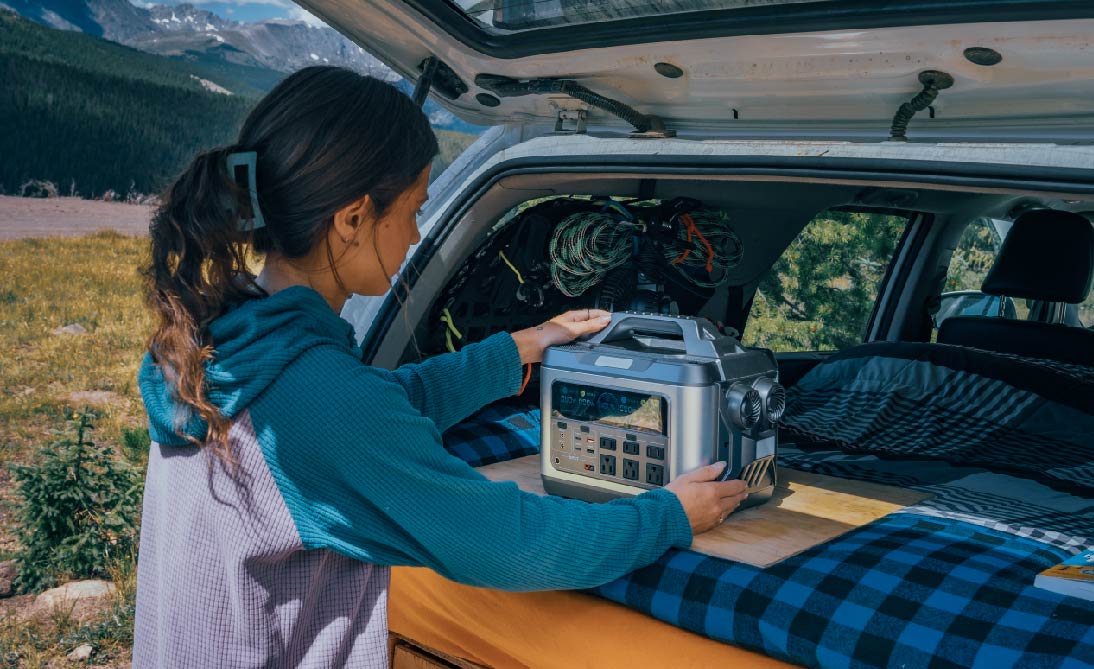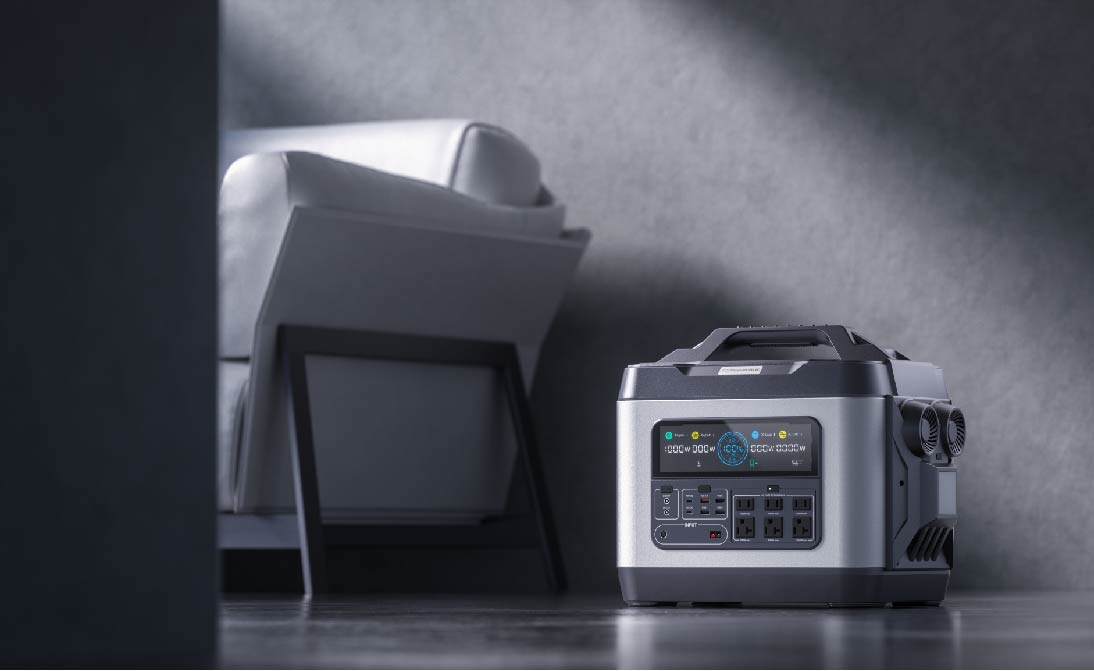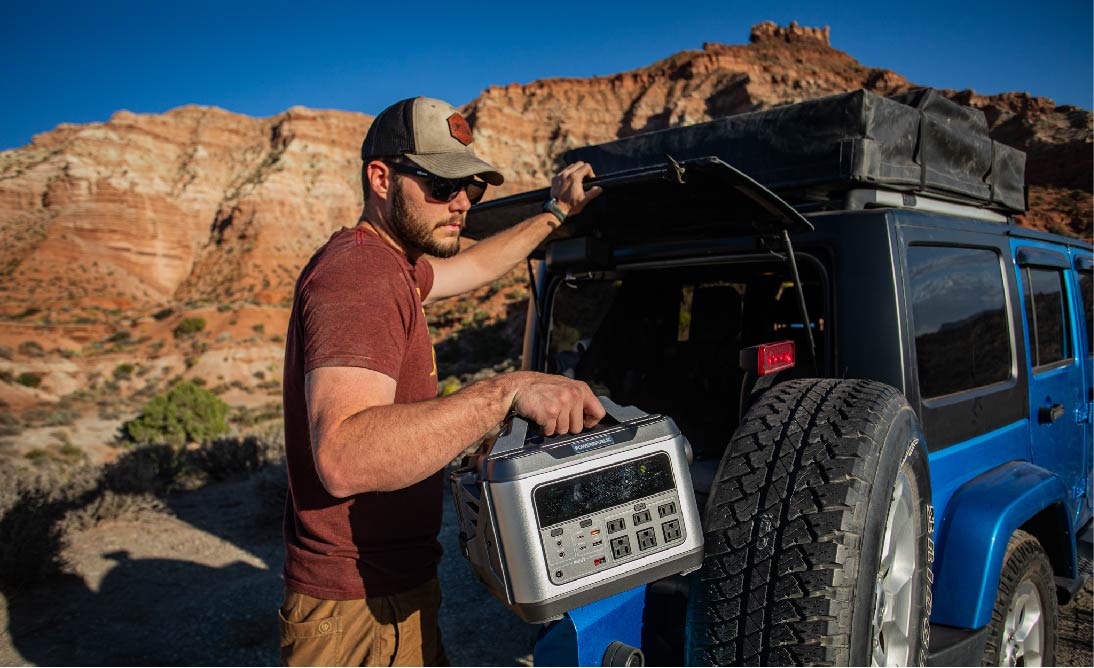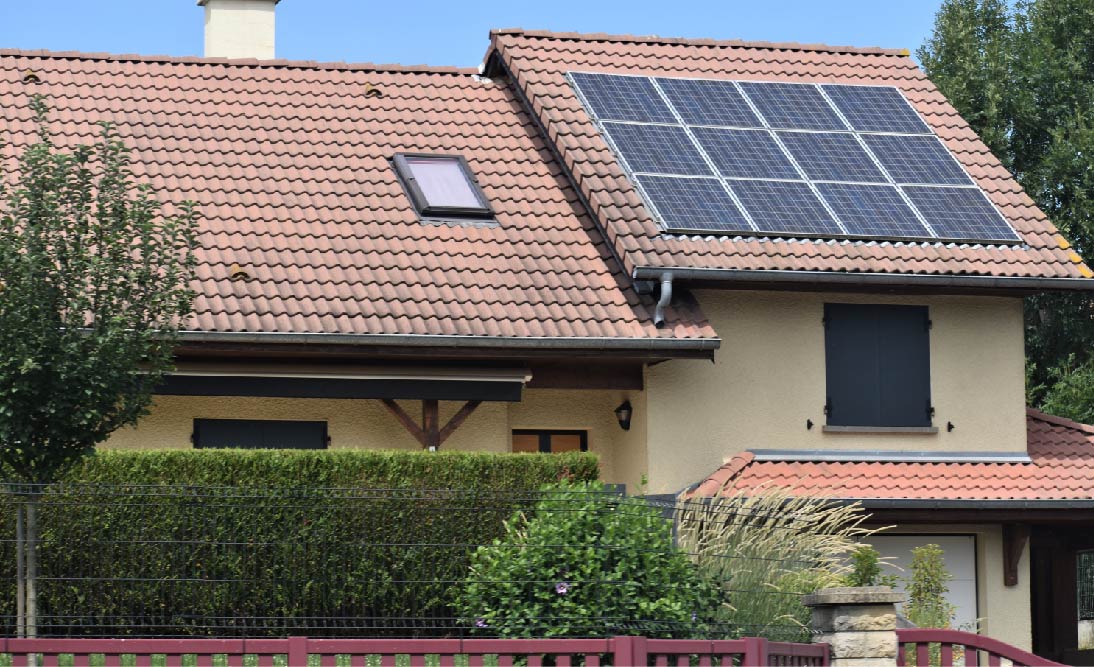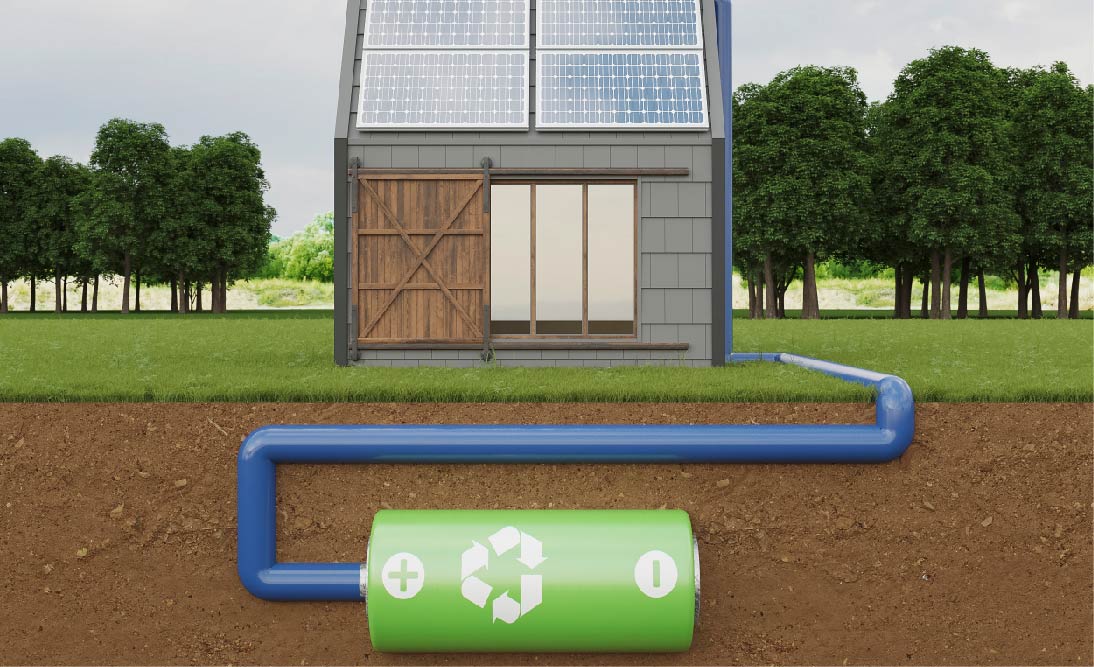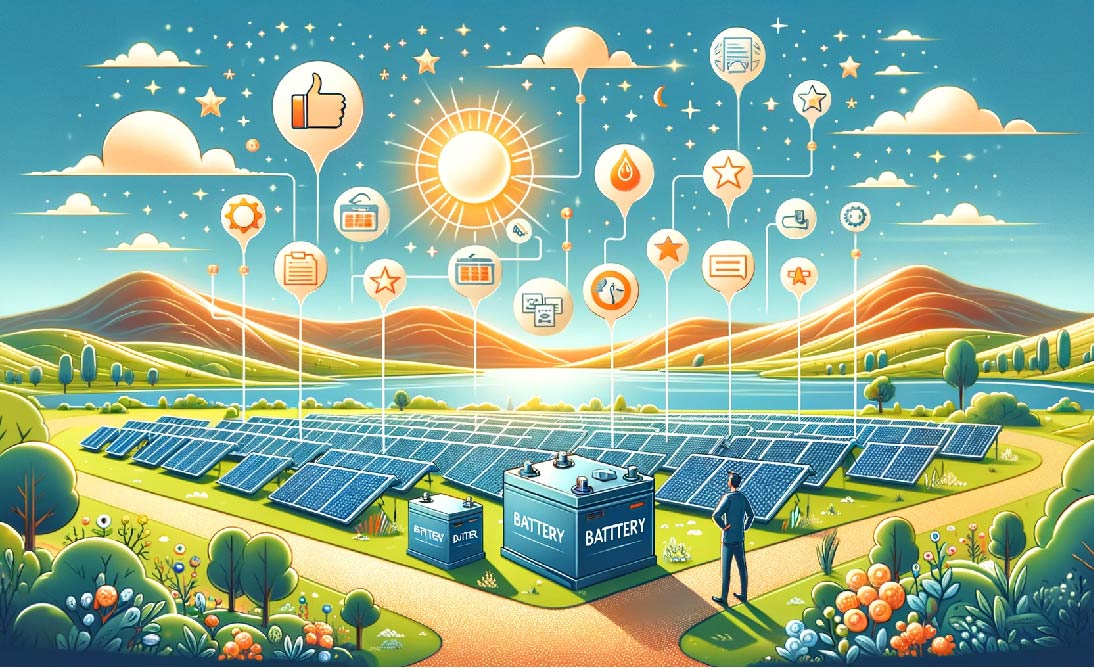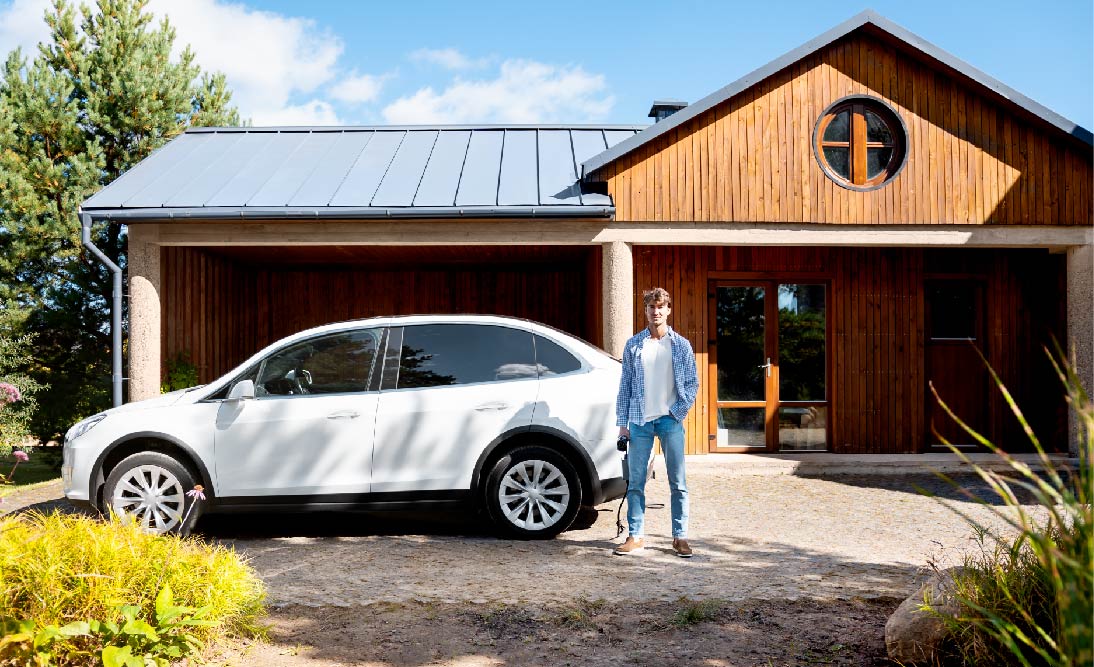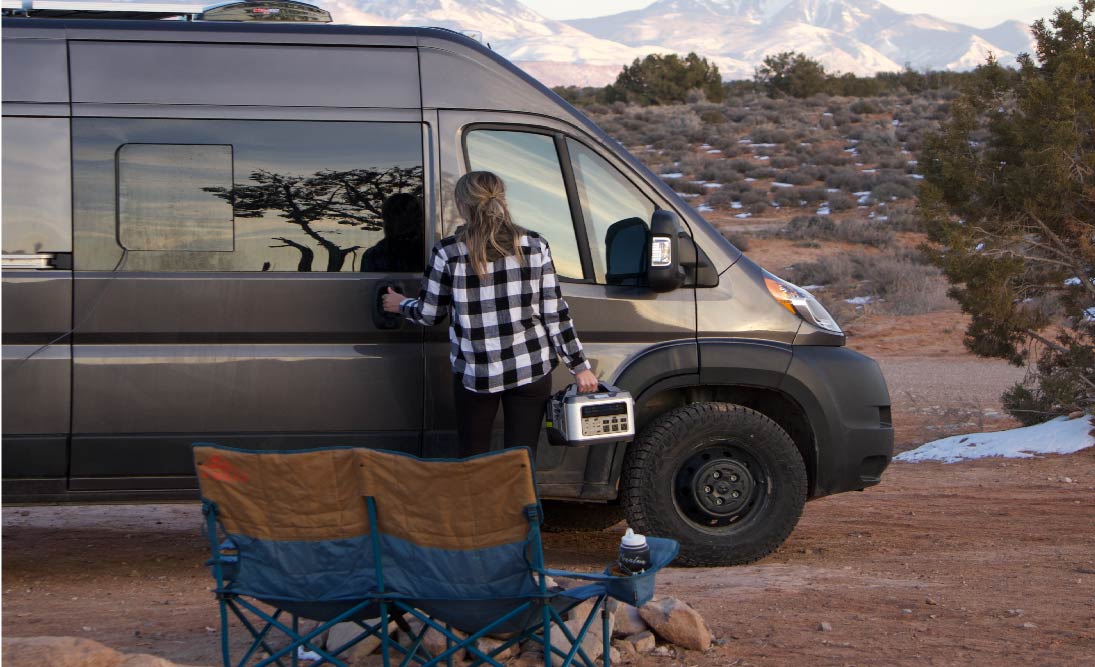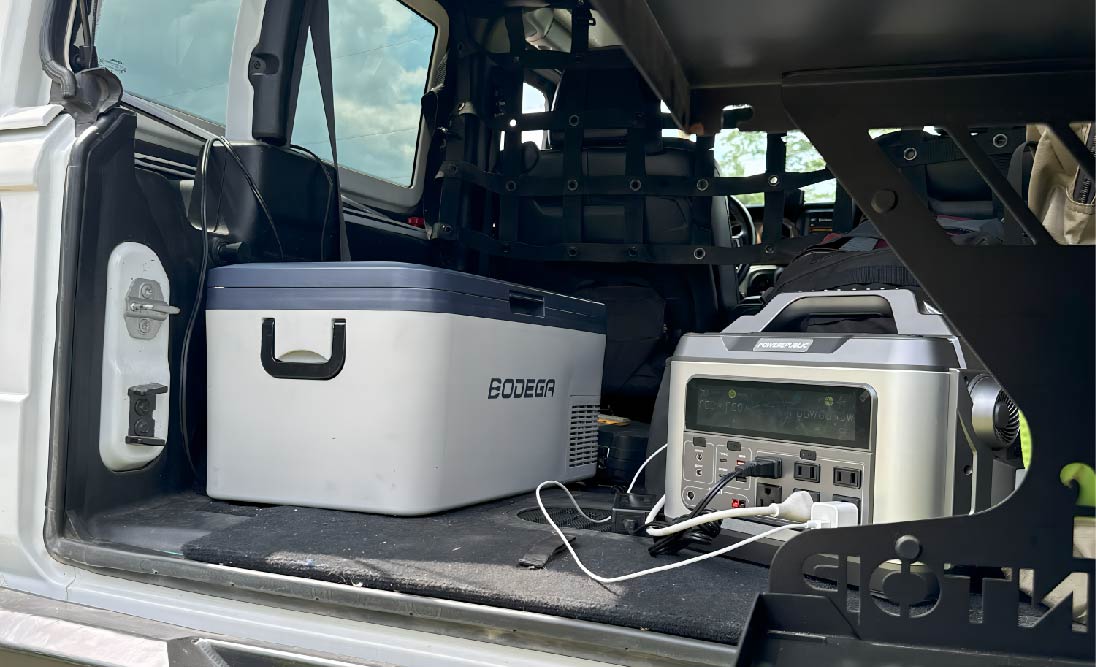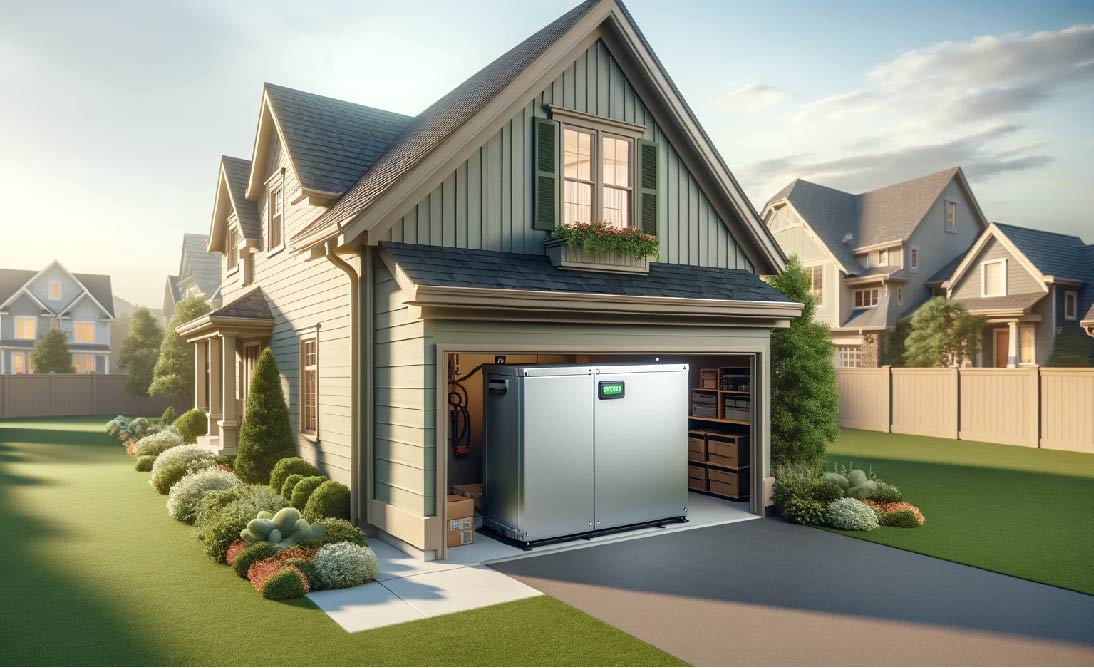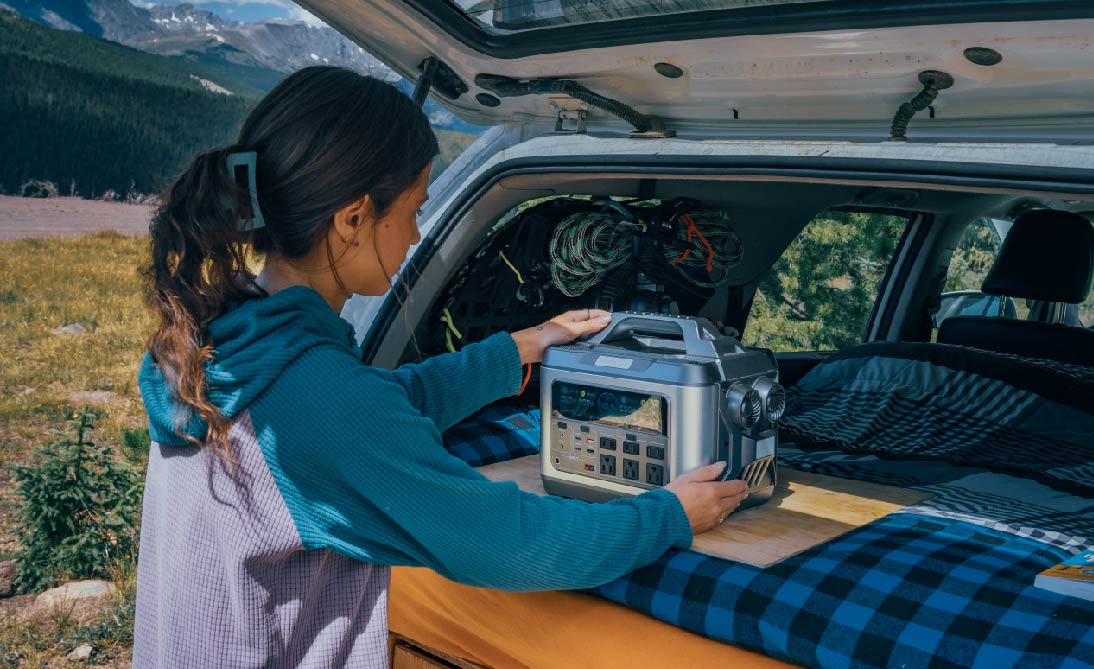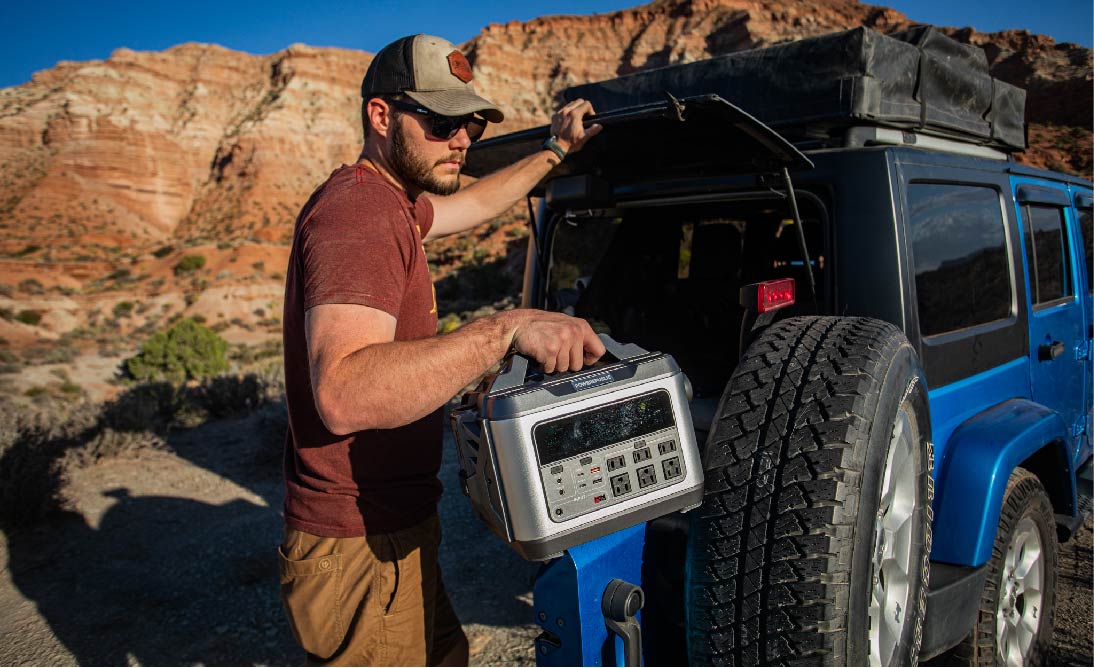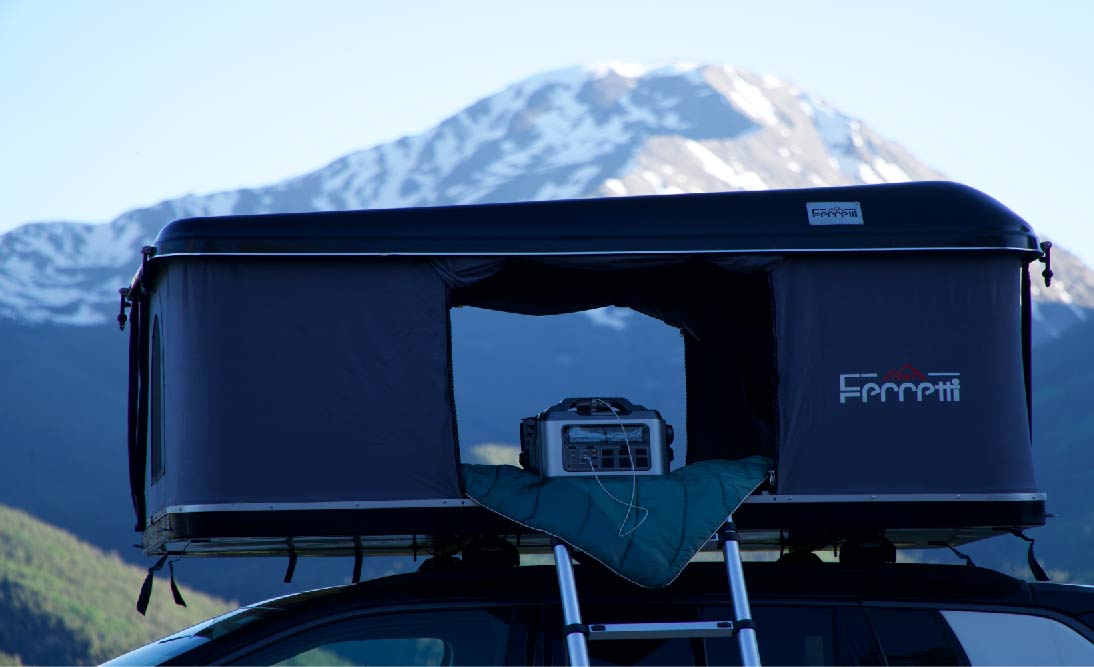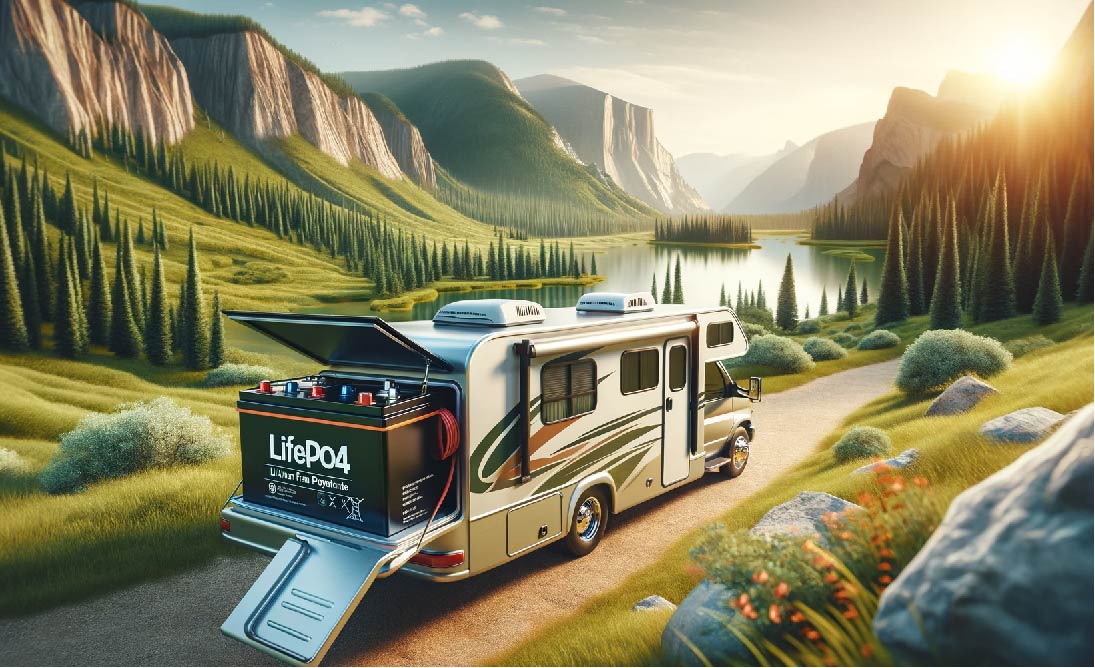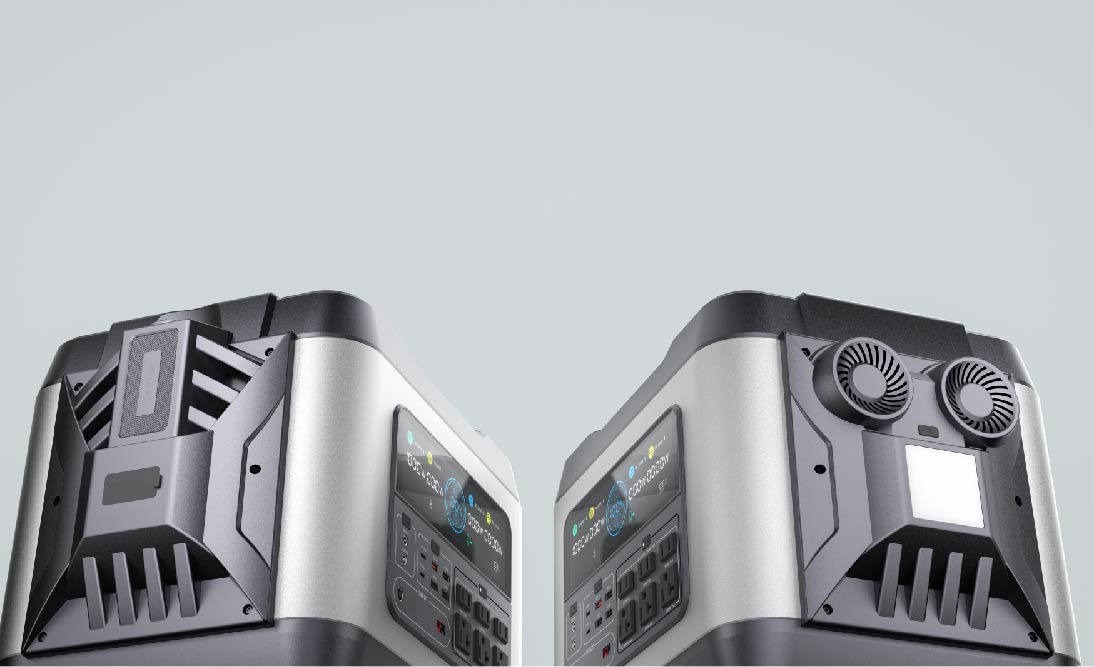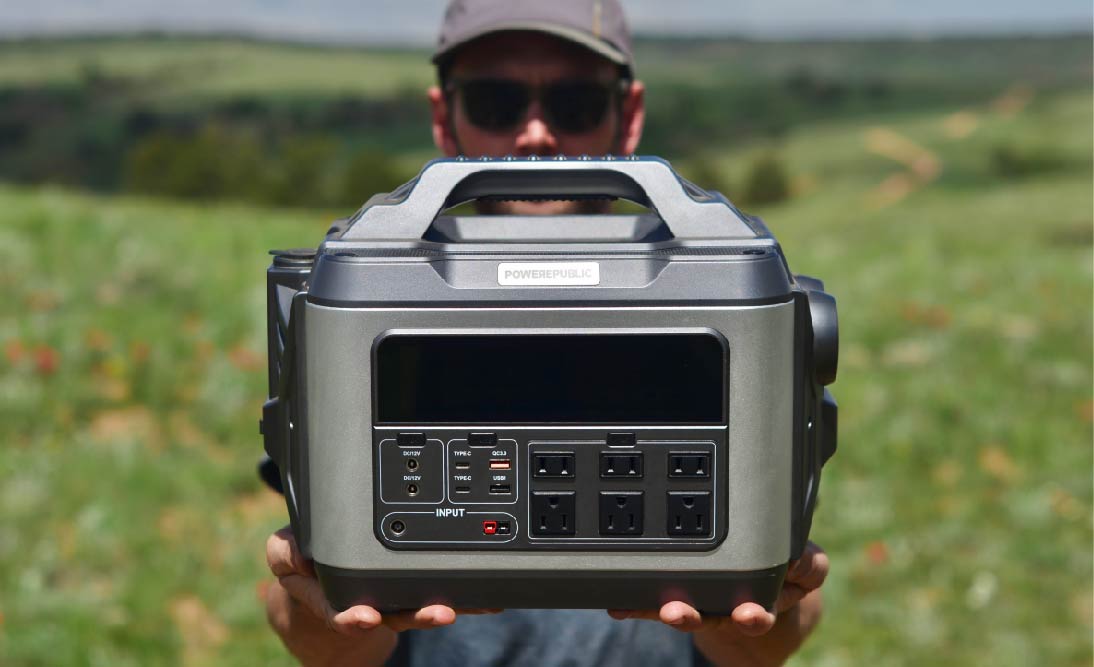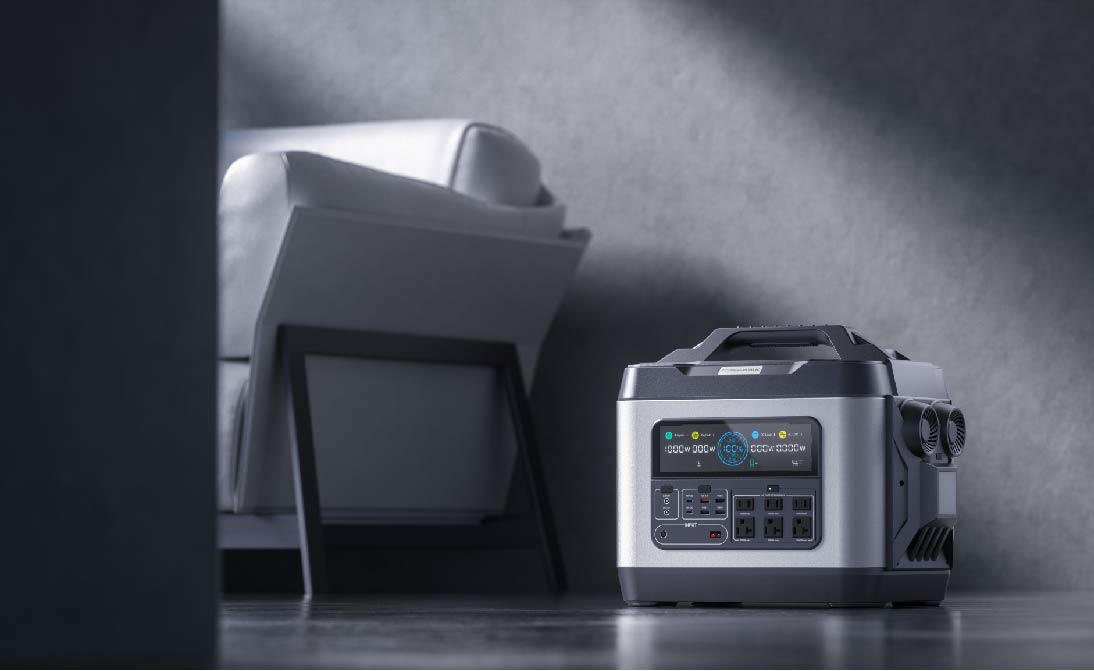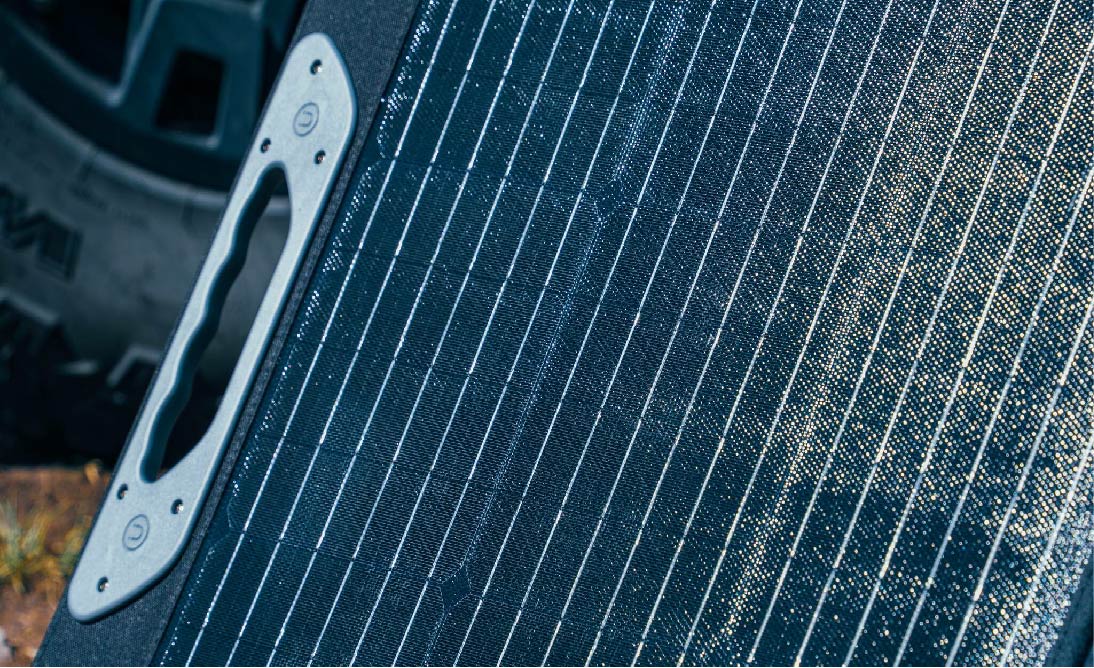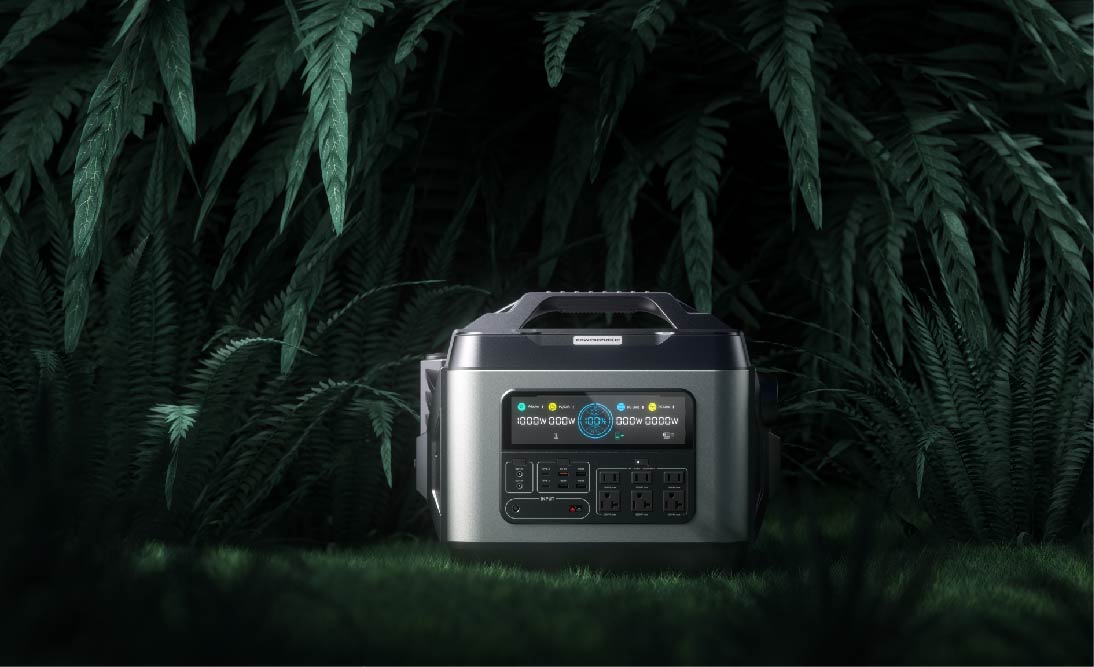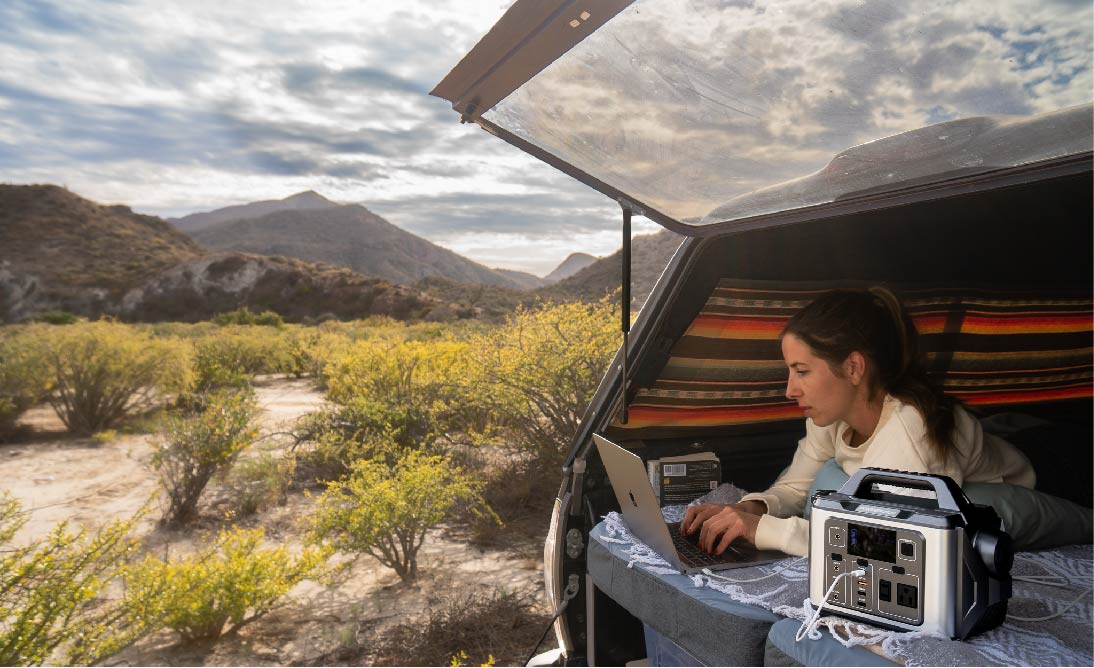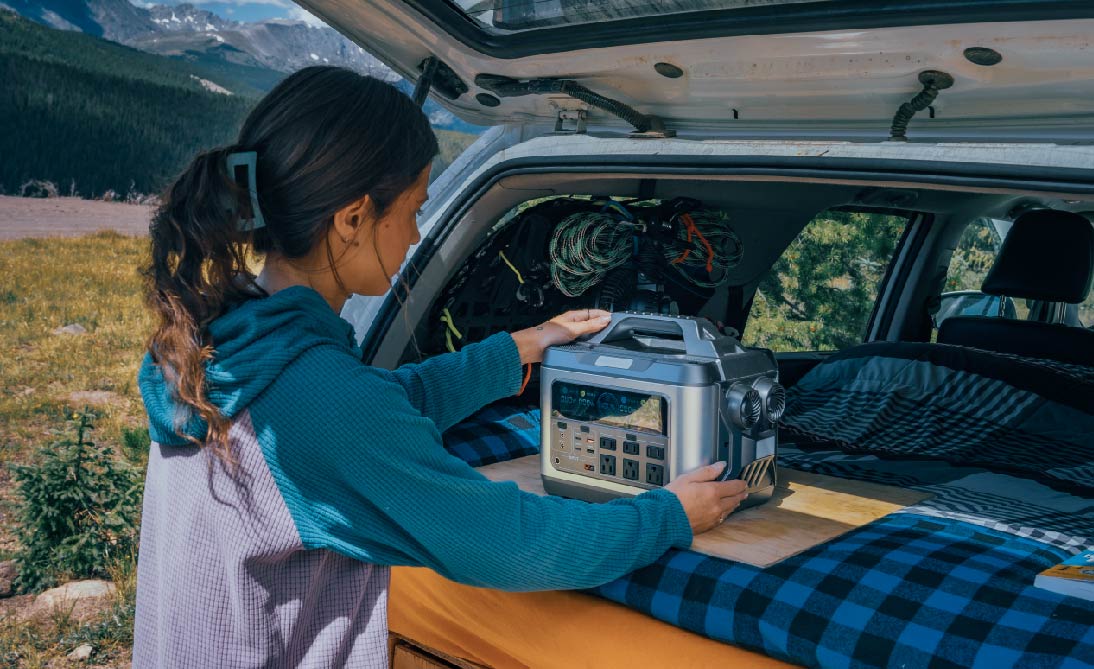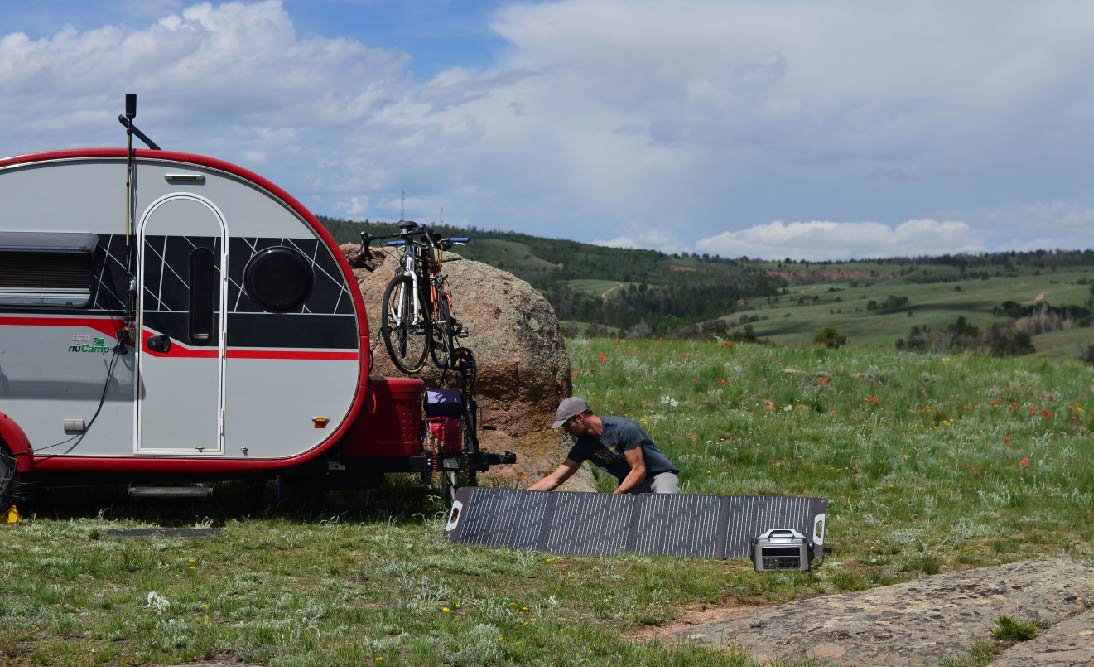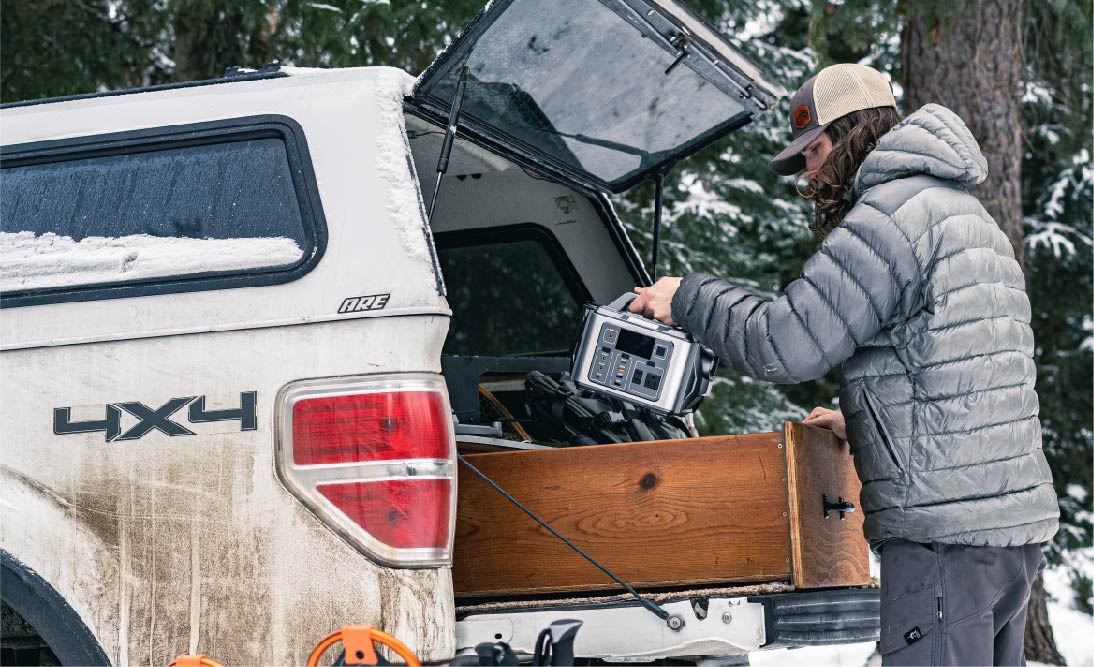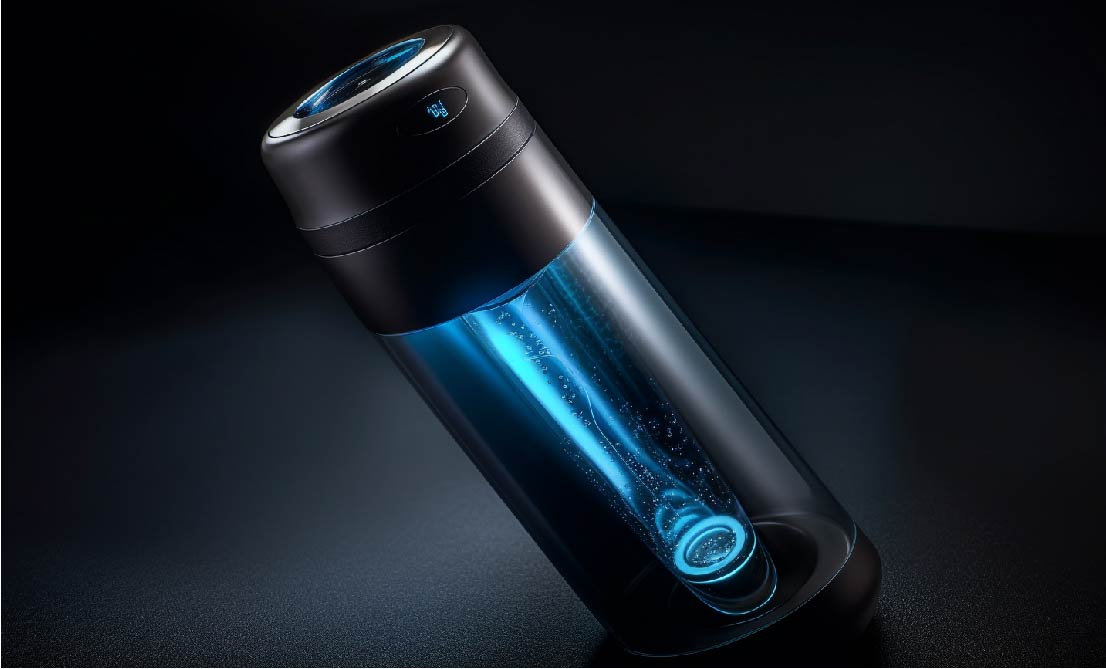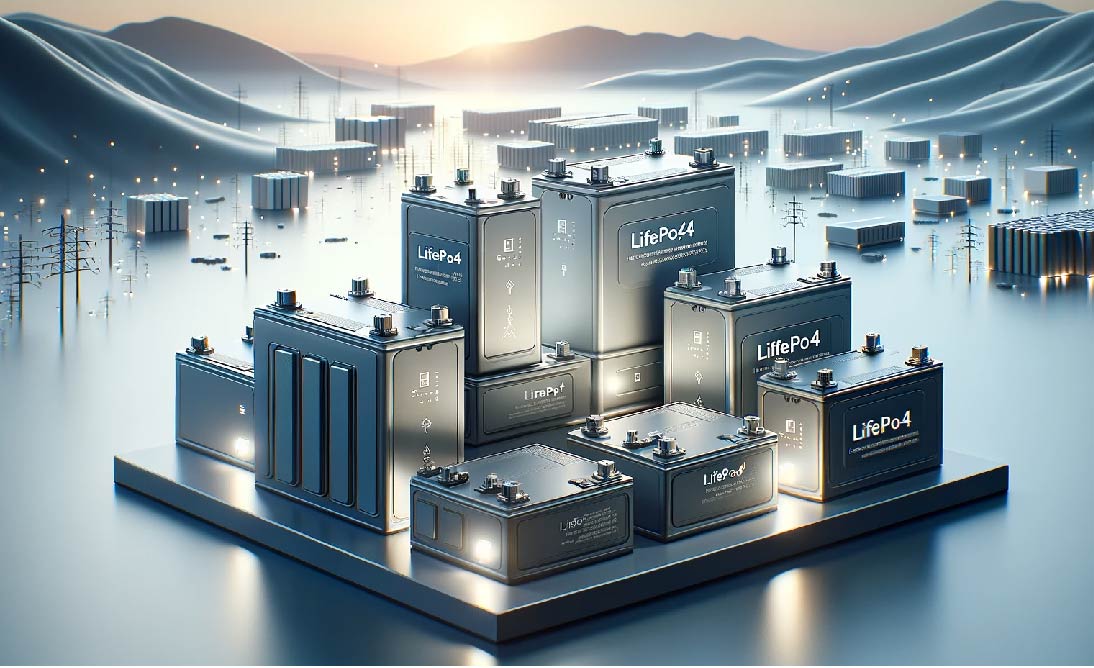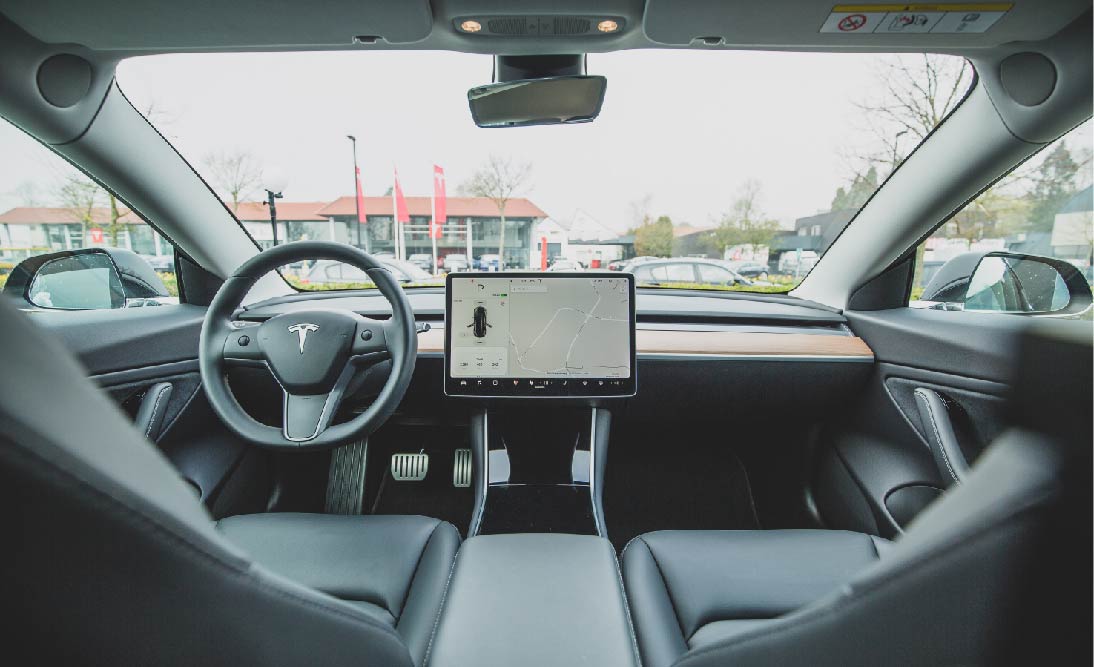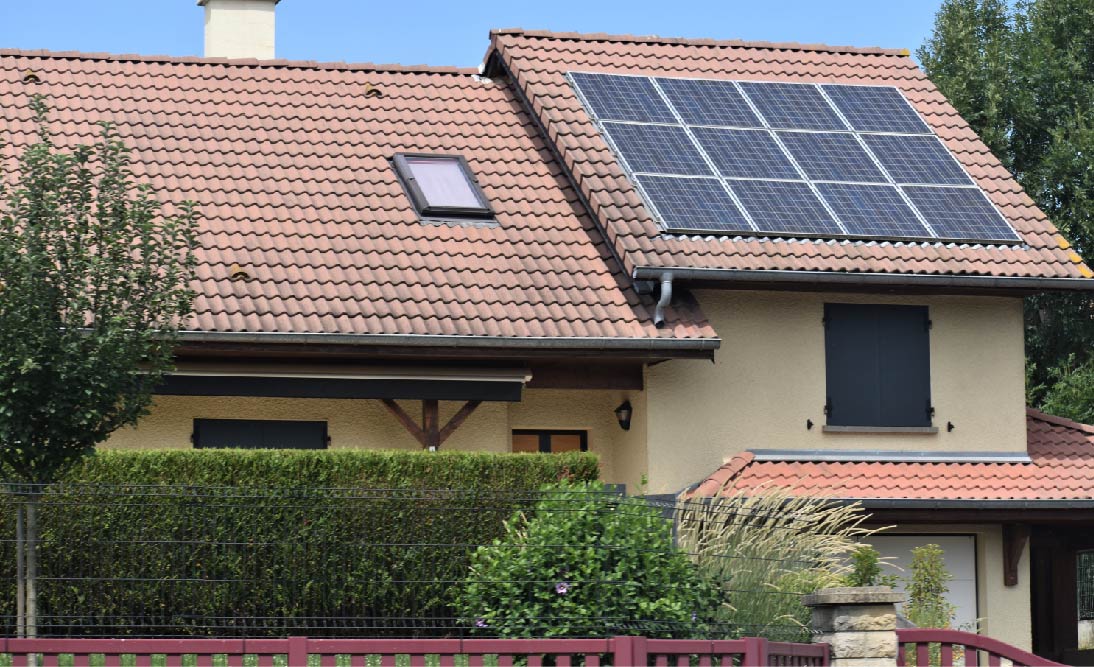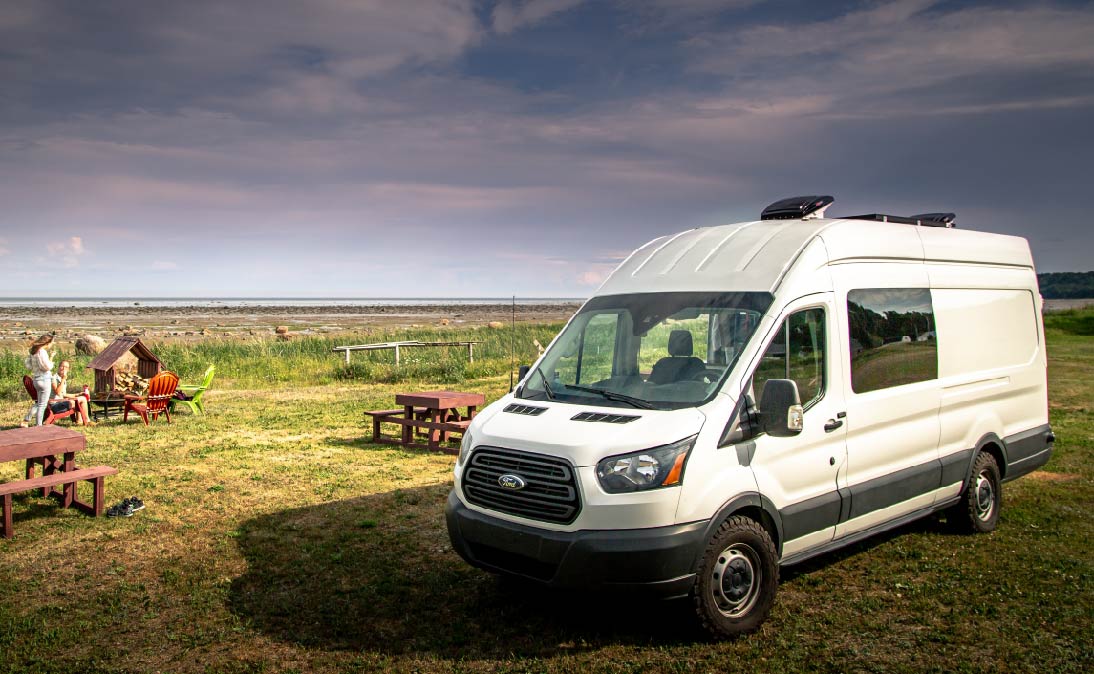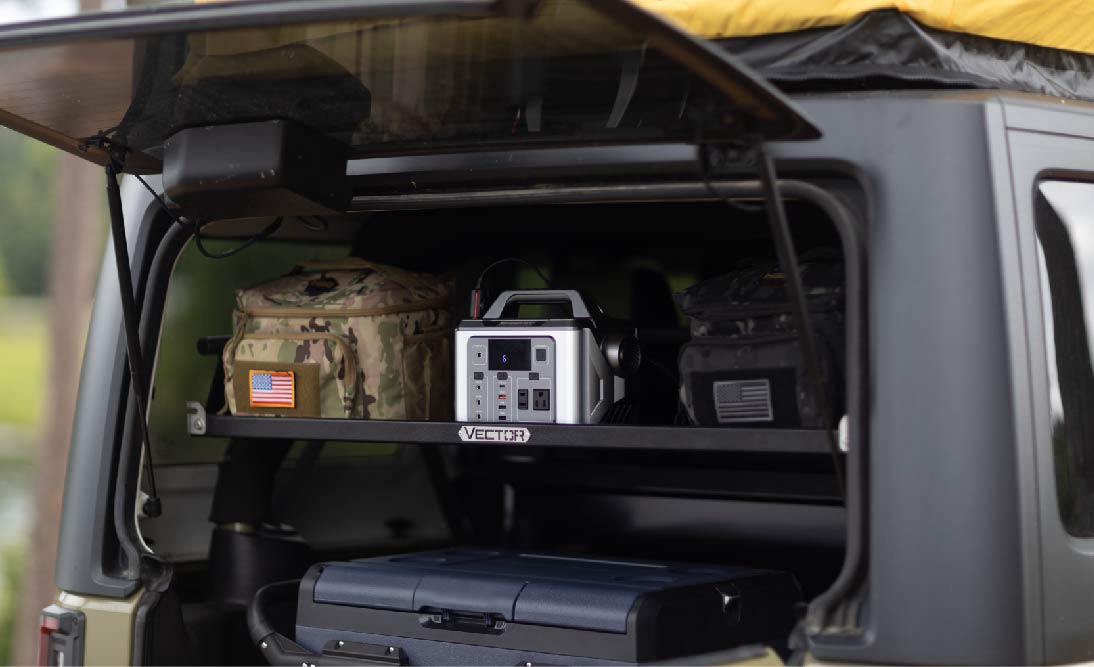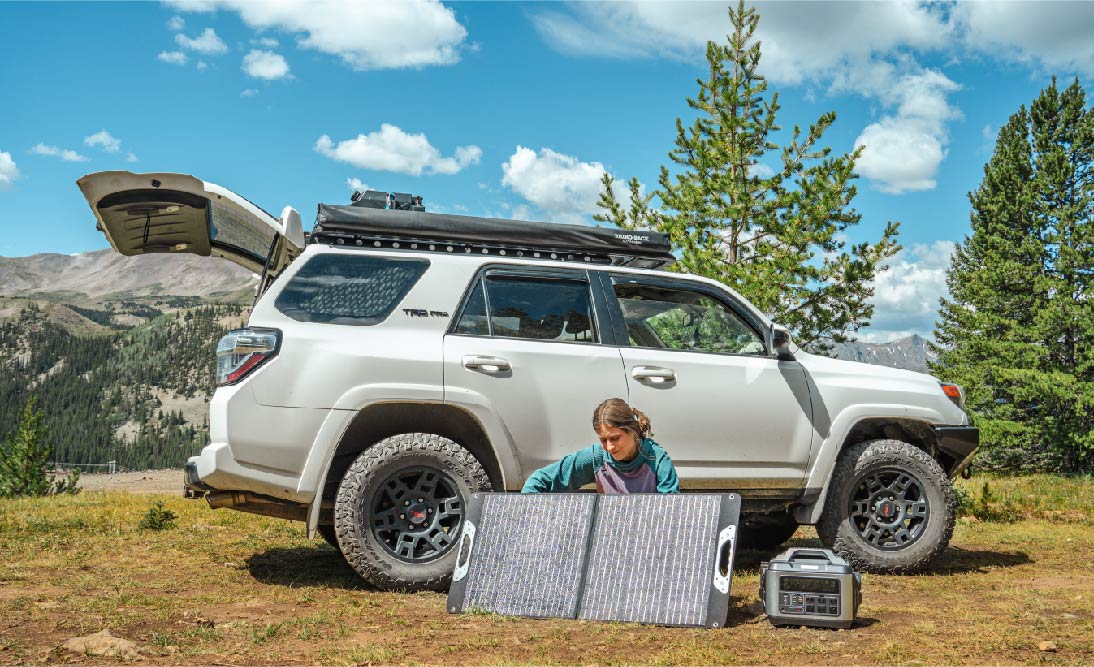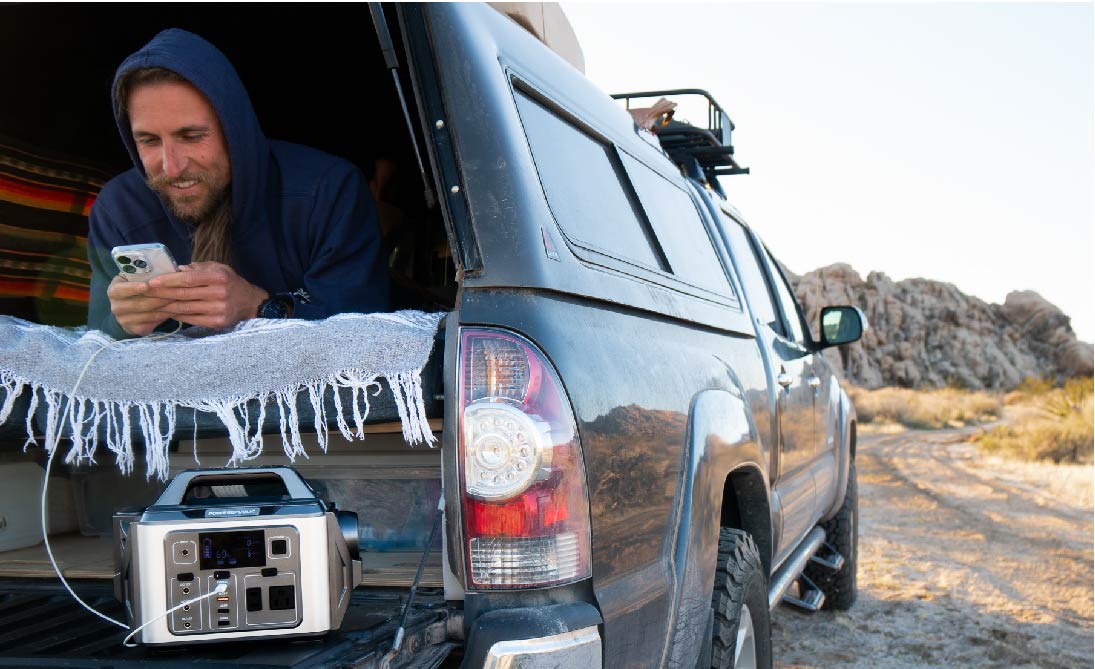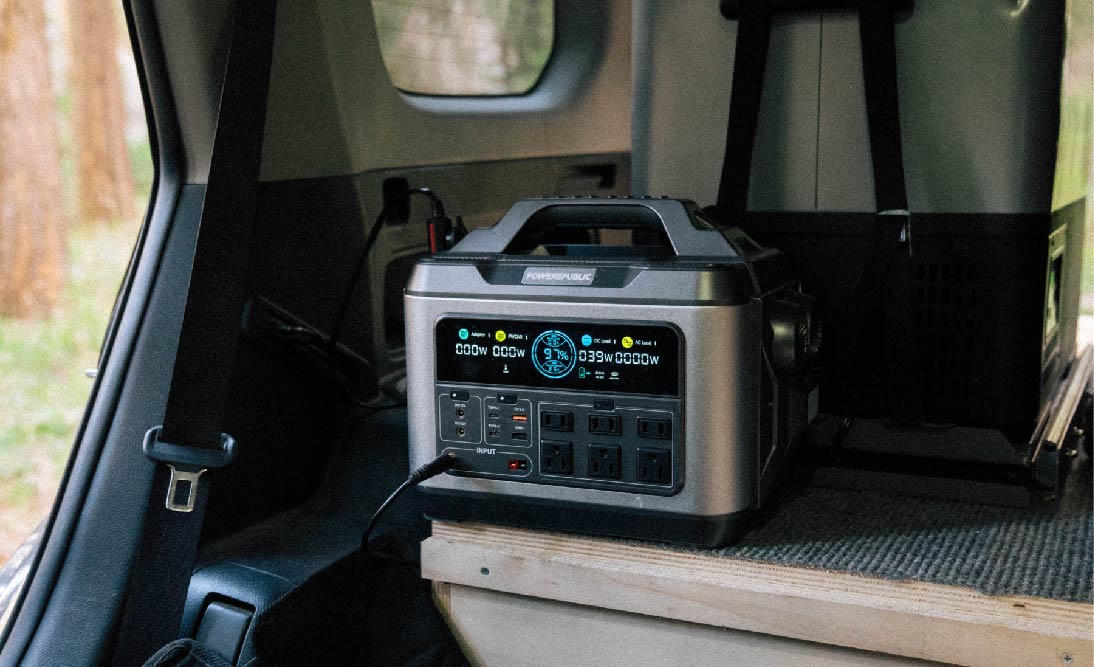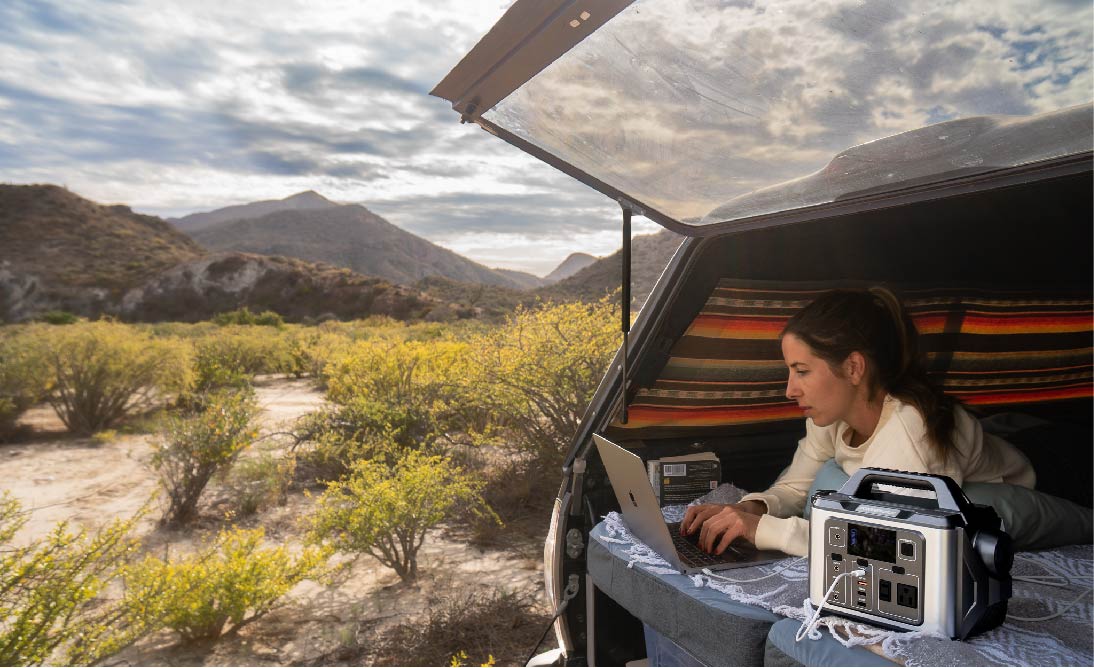Table of Contents:
-
What Size Solar Generator to Run a Refrigerator and a Freezer?
-
Benefits and Limitations of Solar Generators for Refrigerators and Freezers
Maintaining the coldness and frozen state of your food and drinks while on the road is crucial. For this, a dependable and enduring power solution is necessary to ensure your refrigerator or freezer remains operational throughout the day. Solar generators stand out as an optimal choice, harnessing solar energy to produce electricity without releasing harmful or toxic chemicals.
In this guide, we'll explore solar generators: their working principles, pricing, advantages, and limitations. We'll guide you on selecting the best solar generator for refrigerators and freezers, introduce two exceptional solar generator kits from POWEREPUBLIC, and address some frequently asked questions.
What is a Solar Generator?

A solar generator or a portable solar generator is a compact, mobile version of a traditional solar power system. It essentially provides a renewable energy source that can be easily transported and used in various locations, making it ideal for camping, outdoor activities, emergencies, or as a backup power source for home use.
Components of a Portable Solar Generator
-
Solar Panels: These are smaller and more lightweight compared to those used in stationary solar installations. They capture sunlight and convert it into electrical energy.
-
Battery Storage: Portable solar generators have built-in batteries (usually lithium-ion due to their lighter weight and higher efficiency) to store the electrical energy generated by the solar panels.
-
Charge Controller: This regulates the flow of electricity from the solar panels to the battery, ensuring the battery charges safely and efficiently.
-
Inverter: This converts the DC electricity stored in the battery to AC electricity, which is the type used by most common appliances and electronic devices.
-
Outlets and Ports: They typically include various outlets (AC, USB, DC, etc.) to connect and power different devices.
How Do Solar Generators Work?

Here's a breakdown of its components and how it works:
-
Energy Collection: When exposed to sunlight, the solar panels generate DC electricity.
-
Energy Storage: This electricity is then directed to the battery via the charge controller. The charge controller manages the charging process to protect the battery from overcharging or undercharging.
-
Energy Conversion and Use: When you need to power or charge a device, the stored DC power in the battery is converted to AC power by the inverter (if the device requires AC power). You can then plug your devices into the generator's outlets.
How Much is a Solar Generator?

The cost of a solar generator varies widely depending on its capacity, quality, and features. Generally, smaller, portable solar generators can cost anywhere from a few hundred dollars to around $1,500. These are suitable for camping, small electronics, and emergency backup for essential devices.
For larger systems designed to power a home or significant appliances, the cost can range from $2,000 to over $10,000. These high-capacity systems often come with more sophisticated technology and larger battery storage capabilities.
It's essential to consider that the initial cost of a solar generator is just part of the total expense. Factors like maintenance, battery replacement, and additional accessories (like extra solar panels or a more efficient inverter) can add to the overall cost over time. When choosing a solar generator, it's crucial to consider your specific power needs, the quality and warranty of the system, and the long-term costs associated with its use.
Power Requirments of a Refrigerator and a Freezer

The power requirements of refrigerators and freezers vary widely based on their type, size, and efficiency. Here's a general overview of different types and their typical power requirements:
|
Appliance Type |
Sub-Type |
Power Usage (Watts) |
Description |
|
Full-Size Refrigerators |
Top-Freezer Refrigerators |
100 to 200 |
Common in households, with a separate freezer compartment on top. |
|
Full-Size Refrigerators |
Side-by-Side Refrigerators |
150 to 250 |
Feature a freezer on one side and a refrigerator on the other. |
|
Full-Size Refrigerators |
French Door Refrigerators |
200 to 300 |
Have two doors on top for the fridge and a drawer-style freezer at the bottom. |
|
Full-Size Refrigerators |
Energy-Efficient Models |
100 to 200 |
Lower power usage depending on the efficiency rating and size. |
|
Mini Refrigerators |
Basic Compact Refrigerators |
50 to 100 |
Small units, often without a freezer compartment. |
|
Mini Refrigerators |
Compact Refrigerators with a Freezer Section |
80 to 150 |
Slightly larger, with a small freezer compartment within the same unit. |
|
Full-Size Freezers |
Chest Freezers |
100 to 300 |
Open from the top and are usually more energy-efficient. |
|
Full-Size Freezers |
Upright Freezers |
100 to 400 |
Stand like a refrigerator, with shelves for easier organization. |
|
Mini Freezers |
Compact Chest Freezers |
100 to 200 |
Smaller in size, opening from the top. |
|
Mini Freezers |
Compact Upright Freezers |
100 to 250 |
Similar to upright full-size freezers but smaller. |
From the table above, we know that:
-
The running power of full-size refrigerators is around 100 to 300W, and surge power is 200 to 900W.
-
The running power of mini refrigerators is around 50 to 150W, and surge power is 100 to 450W.
-
The running power of full-size freezers is around 100 to 400W, and surge power is 200 to 1200W.
-
The running power of mini freezers is around 100 to 250W, and surge power is 200 to 750W.
(The surge power can be 2 to 3 times the running power.)
Some Key Points to Consider:
-
Size and Capacity: Larger models generally consume more power.
-
Energy Star Rating: Models with ENERGY STAR ratings are more energy-efficient.
-
Usage Habits: Frequent opening or setting very low temperatures can increase power consumption.
-
Age of the Appliance: Newer models tend to be more energy-efficient than older ones.
It's important to note that these figures are approximate and can vary by specific model and brand. For the most accurate information, it's recommended to check the manufacturer's specifications or use an energy usage meter. Knowing this will help you make better decisions on figuring out the size of your solar generator, and select the best solar generator for a refrigerator and a freezer.
What Size Solar Generator to Run a Refrigerator and a Freezer?

Selecting the right size solar generator to run a refrigerator and a freezer depends on several factors, including the power requirements of the appliance, the duration of use, and the efficiency of the solar generator system.
Here's a detailed analysis of different types of refrigerators and freezers:
1. Full-Size Refrigerators
-
Top-Freezer, Side-by-Side, French Door, and Energy-Efficient Models (100 to 300 Watts).
-
Solar Generator Size: For continuous operation, a solar generator with a capacity of at least 1000 to 2000 watt-hours (Wh) is advisable. This allows for daily energy consumption and accounts for days with less sunlight.
-
Additional Considerations: A generator with a higher wattage inverter (around 500 to 600 watts) is necessary to handle the initial surge power when the compressor starts.
2. Mini Refrigerators
-
Basic Compact and Compact with Freezer Section (50 to 150 Watts).
-
Solar Generator Size: A smaller solar generator with a capacity of around 500 to 1000 watt-hours (Wh) can be sufficient, considering lower power usage.
-
Additional Considerations: An inverter with at least 200 to 300 watts capacity is recommended to handle start-up surges.
3. Full-Size Freezers
-
Chest and Upright Freezers (100 to 400 Watts).
-
Solar Generator Size: A larger solar generator, around 1500 to 3000 watt-hours (Wh), is recommended to ensure uninterrupted operation and to compensate for days with less sun.
-
Additional Considerations: A robust inverter (500 to 600 watts) to handle start-up surges is crucial.
4. Mini Freezers
-
Compact Chest and Upright Freezers (100 to 250 Watts).
-
Solar Generator Size: A generator with a capacity of about 1000 to 2000 watt-hours (Wh) would be appropriate.
-
Additional Considerations: Ensure the inverter can handle start-up surges, typically 300 to 500 watts.
General Tips for Sizing Solar Generators:
-
Calculate Daily Energy Needs: Multiply the appliance’s power usage by the number of hours it runs per day. Add a buffer of 20-25% for energy loss in the system and unforeseen usage.
-
Consider Inverter Size: Ensure the inverter can handle the appliance's start-up surge, which is often higher than its running power.
-
Battery Capacity: Choose a solar generator with a battery capacity that can handle at least one full day's energy needs of your appliance. This is crucial for cloudy days or during extended usage.
-
Solar Panel Input: Make sure the solar generator can be recharged efficiently. Larger solar panel inputs are better for quicker recharge times.
-
Efficiency: Energy-efficient appliances require smaller solar generators, reducing overall costs.
Example Calculation:
For a top-freezer refrigerator (200 watts) running 24 hours a day:
-
Daily Energy Requirement: 200 Wx24 hours=4800 Wh
-
Solar Generator Size (with buffer): 4800 Wh×1.25=6000 Wh
In this case, a solar generator with a capacity of around 6000 watt-hours would be recommended, considering energy losses and variability in solar generation.
The size of the solar generator required will vary based on the specific power needs of your refrigerator or freezer and your usage pattern. It's important to consider both the running and start-up power requirements and to factor in additional buffers for energy losses and variability in solar energy availability. By considering these factors, you can better understand how to select the best solar generator for a refrigerator and a freezer.
Best Solar Generator for Refrigerators and Freezers

As mentioned above, there are various types of refrigerators and freezers. Regardless of the type you currently own, the POWEREPUBLIC T1200 and T2200 solar generators can handle them without any doubt, making them two of the best solar generators for refrigerators and freezers.
To better understand and compare these two options, we have prepared a table below. This table highlights some of their important features and demonstrates how long they can power a refrigerator and a freezer:
|
Models |
Features |
Power of the Appliances(W) |
Est.Working Time(hours) |
|
POWEREPUBLIC T1200+PV100 & T1200+PV200 Solar Generator Kits |
1200W/1110Wh, 2600W Surge Power Lithium-ion Batteries 13 Output Ports LED Light on the Side |
Full-size Refrigerators(100-300W) Mini Refrigerators(50-150W) Full-size Freezers(100-400W) Mini Freezers(100-250W) |
Full-size Refrigerators: 3 - 9.5 Mini Refrigerators: 6 - 18.5 Full-size Freezers: 2 - 9.5 Mini Freezers: 3.5 - 9.5 |
|
2200W/2240Wh, 4500W Surge Power LiFePO4 Batteries 15 Output Ports LED Light on the Side |
Full-size Refrigerators(100-300W) Mini Refrigerators(50-150W) Full-size Freezers(100-400W) Mini Freezers(100-250W) |
Full-size Refrigerators: 6 - 19 Mini Refrigerators: 12.5 - 38 Full-size Freezers: 4.5 - 19 Mini Freezers: 7.5 - 19 |
Note that:
-
Working Time(hours)=Capacity(Wh) x 0.85(conversion rate) / Total Power of the Appliance(W)
-
You can use this formula to estimate the working time of any devices and appliances. Just remember that the larger the total power, the shorter the working time. Also, remember to consider the surge power to ensure that the solar generator can handle it.
Benefits and Limitations of Solar Generators for Refrigerators and Freezers

Here’s a table outlining the benefits and limitations of solar generators for refrigerators and freezers:
|
Benefits |
Limitations |
|
Eco-Friendly: Solar generators produce clean, renewable energy without emitting greenhouse gases. |
Initial Cost: Higher upfront investment compared to conventional generators. |
|
Quiet Operation: They operate silently, making them suitable for residential areas and outdoor activities. |
Dependence on Weather: Efficiency drops on cloudy days or in locations with less sunlight. |
|
Low Operating Costs: No fuel costs and minimal maintenance expenses. |
Charging Time: It takes time to recharge the batteries, which can be a limitation during prolonged usage. |
|
Portable: Many models are designed for easy transportation, ideal for camping or emergencies. |
Power Capacity: Limited power capacity compared to some conventional power sources, affecting their ability to run larger appliances for extended periods. |
Solar generators are an eco-friendly and cost-effective option for powering refrigerators and freezers, ideal for those seeking sustainable energy solutions. While they require a higher initial investment and are dependent on weather conditions, their benefits in terms of quiet operation and low maintenance costs make them a compelling choice for various applications.
FAQ I: What’s the Lifespan of a Solar Generator?

The lifespan of a solar generator largely depends on its components, particularly the portable power station and solar panels. Typically, a solar generator can last between 25 and 35 years. However, the battery, being the most critical component, often has a shorter lifespan.
-
Battery Lifespan: Most modern solar generators use lithium-ion batteries, which have a lifespan of about 500 to 1500 charge cycles. Assuming a complete charge-discharge cycle per day, this translates to roughly 1.5 to 4 years. However, actual usage patterns (partial charge and discharge) can extend this to 5 years or more.
-
Solar Panel Lifespan: Solar panels in portable generators usually last about 25 to 30 years before their efficiency significantly decreases. Over time, their ability to convert sunlight into electricity diminishes, generally at a rate of about 0.5% to 1% per year.
-
Other Components: Inverters and charge controllers may also need replacement during the life of the generator. These typically last 10 to 15 years.
For example, a POWEREPUBLIC T1200 solar generator with lithium-ion batteries, if used daily, might require a battery replacement in about 3 to 4 years, while its solar panels will continue to function effectively for about 10 to 15 years.
FAQ II: How To Take Care of My Solar Panels?

Proper maintenance of solar panels is crucial for ensuring their efficiency and longevity. Here are the key steps:
-
Regular Cleaning: Dust, dirt, and bird droppings can reduce solar panel efficiency. Clean them every 6 to 12 months using water and a soft brush or cloth. Avoid abrasive materials that could scratch the panels.
-
Check for Obstructions: Ensure trees or buildings do not cast shadows on the panels, as this can significantly reduce their output.
-
Regular Inspections: Inspect for any visible damage, such as cracks or discoloration. If any damage is found, a professional assessment is recommended.
-
Avoid Physical Stress: Do not place heavy objects on the panels and ensure they are not subjected to physical stress or harsh environmental conditions.
-
Professional Maintenance: Consider having a professional inspection every few years to check for any issues that might not be visible to the untrained eye.
FAQ III: Are Portable Solar Panels Worth It?

The worthiness of portable solar panels depends on your specific needs and circumstances. Here are some points to consider:
Advantages:
-
Portability: Ideal for camping, RVs, and outdoor activities where grid power is unavailable.
-
Eco-Friendly: They offer a clean, renewable source of energy.
-
Low Operating Costs: Once purchased, there are no fuel costs and minimal maintenance expenses.
Disadvantages:
-
Limited Power Output: They may not be suitable for high-power applications.
-
Weather-Dependent: Their efficiency decreases in cloudy or inclement weather conditions.
-
Cost-Effectiveness: They can be cost-effective in the long term, especially if used in off-grid situations where alternative power sources (like fuel generators) would incur ongoing costs.
For instance, a POWEREPUBLIC PV100 portable solar panel paired with a T1200 portable power station can provide enough power for small appliances and electronics during camping trips, making it a worthwhile investment for outdoor enthusiasts or those seeking an emergency power backup.
solar generators and portable solar panels are valuable investments for specific applications, especially where green, portable, and low-maintenance power solutions are required. The key is to understand your power needs and usage patterns to select the right size and type of solar generator and panels.
Final Thoughts
Choosing a solar generator for a refrigerator and a freezer is a smart, eco-friendly way to keep your food and drinks chilled, especially when outdoors camping or needing a backup at home. The key is to find the best solar generator for your fridge and freezer that perfectly matches its power needs.
The POWEREPUBLIC T1200 and T2200 solar generator kits are great options for this. They're easy to move around, powerful, and good for the environment, making them fit well with different types of fridges and freezers. These solar generators run quietly, are cost-effective, and don't need much upkeep, making them some of the best solar generators for a refrigerator out there. By picking the right one, you'll have a dependable, green power source for keeping your food cold, making these kits the best solar generator for a refrigerator in various situations.
